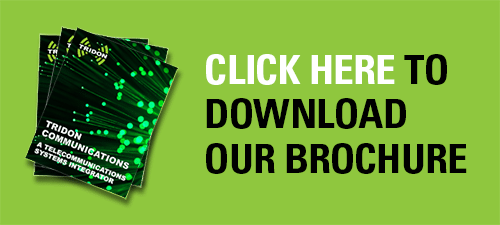If your data cabling layout is experiencing performance issues, Contact Us
Our team is here to help.
Information is one of the most valuable assets for Alberta businesses, and many of them can thrive or falter on their ability to consistently get it from the source to where it’s needed. Anything that gets in the way of that can slow your processes down. The best-case scenario is that you’ll experience some lag (and frustration) when it takes longer to get the information you need. The worst-case scenario is that you’ll be hit with serious downtime, too. On top of frustration, you’ll be faced with potential lost revenue and maintenance costs, as well as delays in your project schedule.
Simple practices, like proper handling and cleaning of your fiber optic cables, can help you sidestep the problems of data loss. If you’d like to learn more, Contact Us. Or, just keep reading.
Decibel (dB) Loss in Fiber Optic Cables
Fiber optic cables transmit information by using light pulses, which are translated into information that can be used by the recipient. The performance of this process is measured in decibel (dB) units. As you might expect, the goal is to get all of your data through. In other words, you want zero data, or dB, loss.
A technician will perform something called an ‘insertion loss test’ to determine how your fiber optic cable is performing. During this test, a light source and a power meter are used to measure how much light makes it through. If too much light is lost, it’s a clear sign that your cable is underperforming, and data (dB) loss is being experienced.
How dB Loss Can Happen
Contaminated End Points
Fiber optic cables are glass. If dirt or oil is allowed to build up, they can’t do the job they’re designed to do. If you wear glasses, you know the difference between looking through a clean lens and a dirty one. The same logic applies.
For the most part, fiber optic cables are covered, so dirt and oil can’t build upon them. However, the endpoints are where the cables connect to devices; those endpoints are not protected.
Make sure your technician inspects the cable endpoints, cleans them, and inspects them once again before installation. Proper handling will also go a long way to avoiding contamination and any potential dB loss.
Bending Cables Too Far
Fiber optic cables are designed to offer a degree of flexibility. That said, bending the cable too much could cause dB loss to the point of making the cable useless. Damage like this most frequently happens during installation.
Be sure to contact your supplier to know how much of a bend you can put in a length of cable before installation starts.
Cracked Fiber
Cleaning and polishing the endpoints of your fiber optic cables is part of good maintenance practice. Not only does it remove contaminants from the cable, but it ensures the ferrules (an internal component that aligns and protects the fibers) aren’t protruding too much. Keeping that surface smooth and level ensures a solid connection, be it to another cable or a device. However, if the ferrule protrudes too much, cables can crack and splinter at the endpoints.
Using manufacturer-specific processes and professional technicians is the best way to avoid this problem.
Contaminated Cable May Still Be Worth Keeping
If a cable is contaminated by dirt or oil, there’s a good chance it will underperform, leaving you with inconsistent data transmission. However, this underperformance isn’t necessarily a reason to throw our cable out and replace it with new cables. Properly cleaning ad reinstalling the cable can save your organization money and maximize the ROI on your cabling layout.
Getting Started
Your cabling layout dictates how well you can transmit information and, ultimately, make decisions. Because of that, it’s just as important to use high-quality cabling, as it is to maintain it. Making maintenance a priority will extend the useful life of your layout and maximize your ROI. Most importantly, it will let you get information when you need it so you can make decisions promptly.
If you have any questions, Contact Us. Our Technicians and Account Managers are here to help.
Tridon is a full solution Telecom Systems Integrator with CSA certification and licensed by APEGA. Our Engineering, Service, and Tower Divisions collaborate with customers to build engineered solutions including communications systems design, tower inspections, and co-location, wireless broadband, fiber optic cabling, site security, and two-way radio communication.




